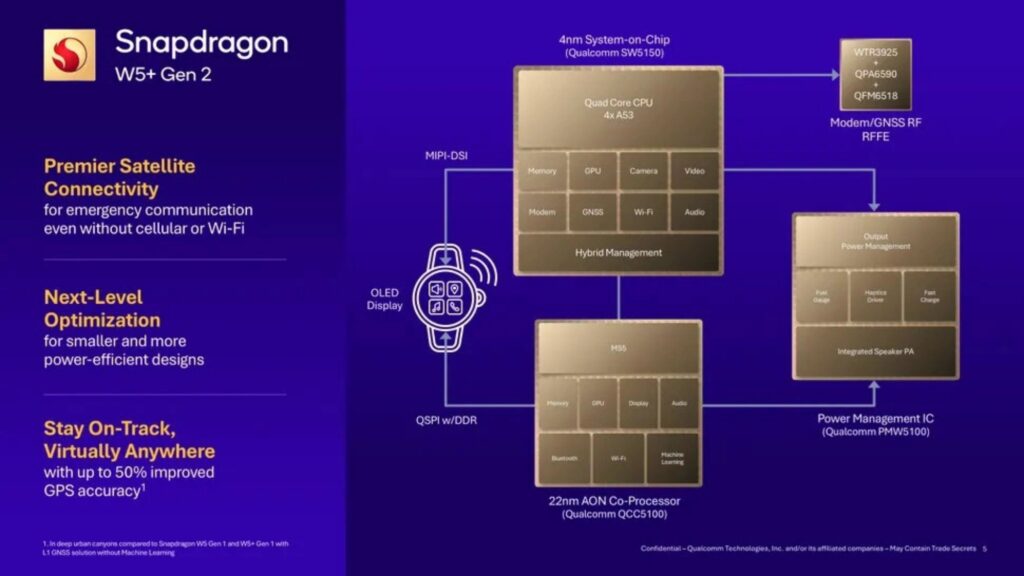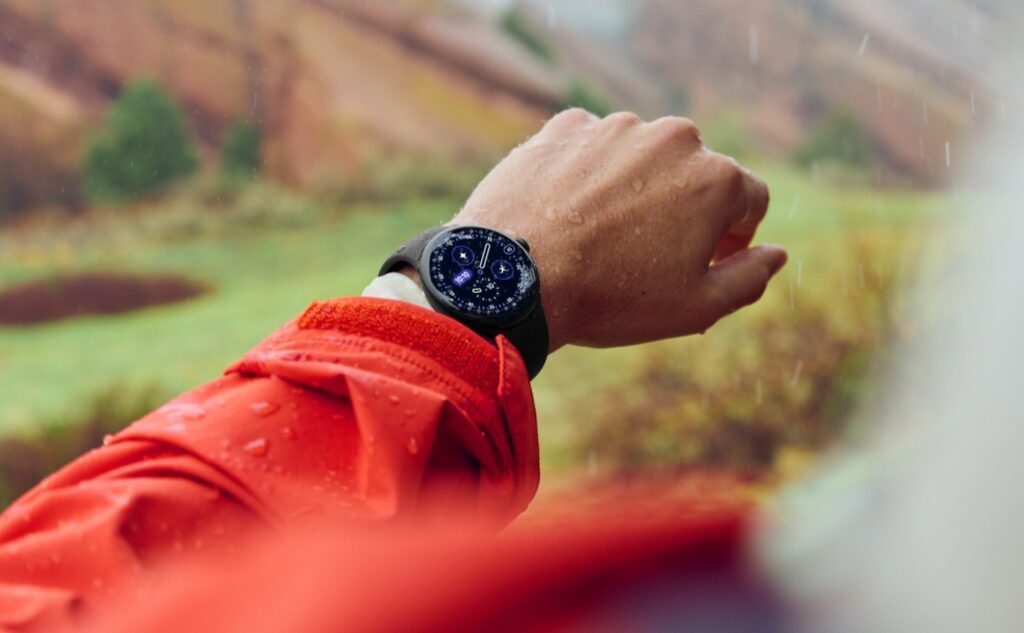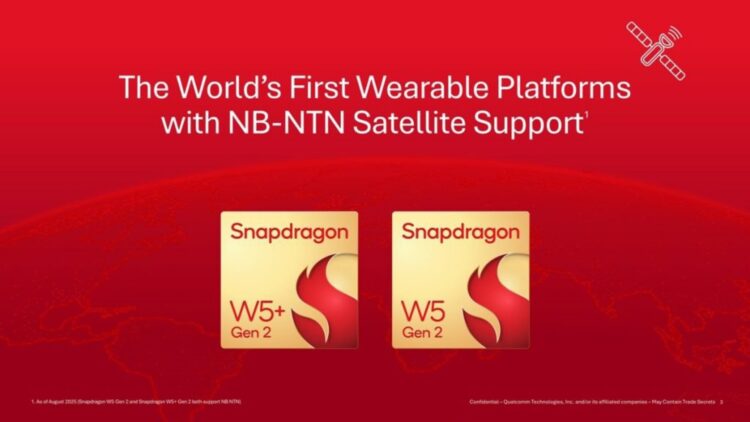Qualcomm has debuted its newest chipsets for smartwatches, the Snapdragon W5 Gen 2 and Snapdragon W5+ Gen 2. This brand-new chipset introduces satellite support to the wearable alongside improved performance, efficiency, and tracking while being capable of slipping into a slimmer housing.
Naturally, the Snapdragon W5 Gen 2 platform is a streamlined version that is especially designed with slimmer wearable designs in mind. In contrast, the Snapdragon W5+ Gen 2 is paired with a specialised low-power co-processor that can manage background tasks to prolong battery life.

The main selling point of both these chipsets is the aforementioned satellite support, allowing users to send and receive emergency messages in the instance that their wearable does not have any cellular or Wi-Fi connection. Furthermore, these platforms also support SOS messaging via Skylo’s Narrowband Non-Terrestrial Network (NB-NTN).
Additionally, the Snapdragon W5 Gen 2 chips come with a new Radio Frequency Front End (RFFE) module which allows for “Location Machine Learning 3.0” for improved GPS tracking. Qualcomm claims that, because of this addition, tracking is 50% more accurate, even in dense urban areas or deep canyon areas.

Apart from the battery management featured on the Snapdragon W5+ Gen 2, the chipset supports Wi-Fi, GNSS, and audio features in ultra-low-power modes. Both chips are optimised for the most recent iteration of Google’s Wear OS, which allows for seamless integration, advanced features, and improved multi-device support.
Both platforms are ultimately topped off by Qualcomm’s Artificial Intelligence Engine, a Hexagon V66K processor with up to 1.7 GHz CPU cores and an Adreno A702 GPU with up to 1 GHz speed, 2.5D graphics, and OpenGL ES 3.1. These two also support LPDDR4 RAM, eMMC storage up to 4.5GB, Bluetooth 5.3, and Qualcomm Processor security.

The first wearable to be sporting this chipset is none other than the recently launched Google Pixel Watch 4. The platform will be made available for additional Wear OS devices in the upcoming months, but it is unknown which smartwatch models will receive it next and when.
(Source: Android Headlines)


